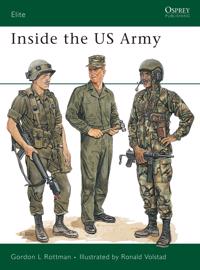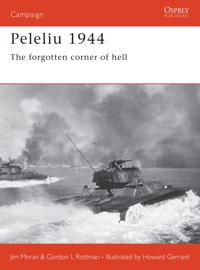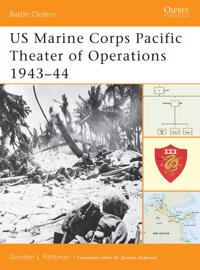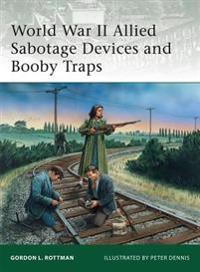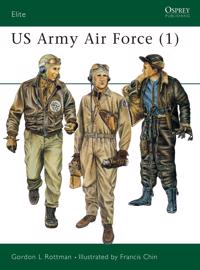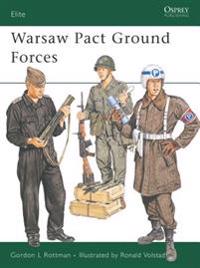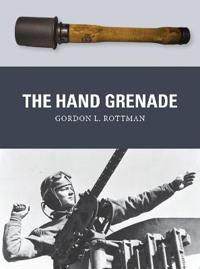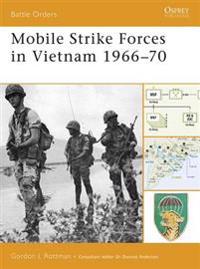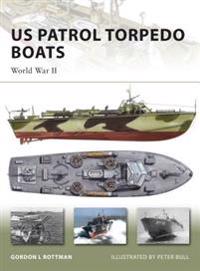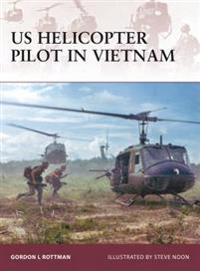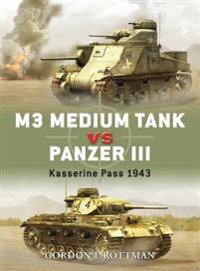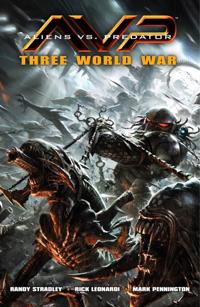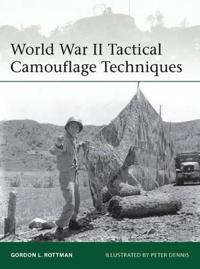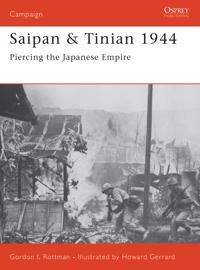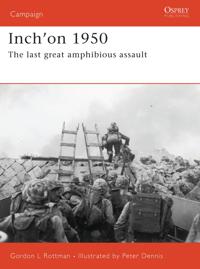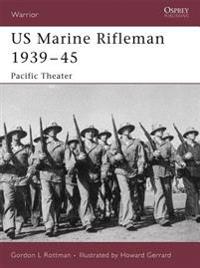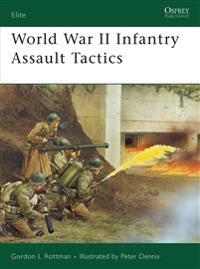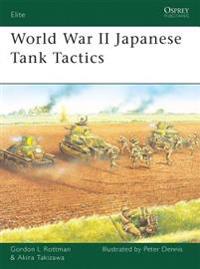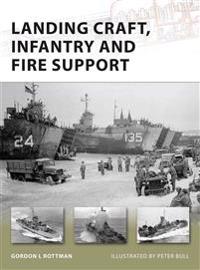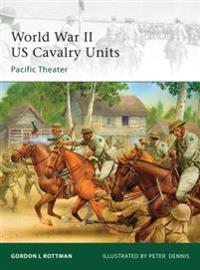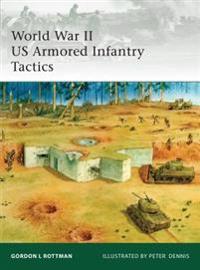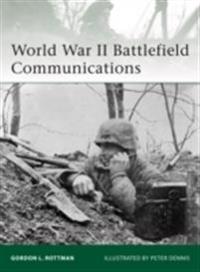Inside the Us Army (Pocket)
avGordon Rottman, Ronald (ILT) Volstad, Gordon Rottman
ISBN: 9780850458558 - UTGIVEN: 1988-11When conscription was eliminated in the early 1970s, the US Army found itself with a very different kind of soldier. While the personality of the Army remained the same, the organization of its higher levels of command and combat formations, and the internal structure of its units underwent major ch[...]
Peleliu 1944 (Pocket)
avGordon Rottman, Howard (ILT) Gerrard, Gordon Rottman
ISBN: 9781841765129 - UTGIVEN: 2002-10Equalling Tarawa, Iwo Jima and Okinawa in scale and ferocity, the battle for Peleliu has long been regarded as the Pacific war's 'forgotten battle'. Originally planned to secure General MacArthur's eastern flank during his invasion of the Philippine Islands, the assault became superfluous after a ma[...]
Us Marine Corps Pacific Theater Of Operations, 1943-44 (Pocket)
avGordon Rottman, Duncan (EDT) Anderson, Gordon Rottman
ISBN: 9781841766515 - UTGIVEN: 2004-10The year 1944 saw a great deal of Marine Corps activity. The early defeats suffered by America in the Pacific were past; the pivotal naval battle for Midway had been won, and the Solomon Islands had fallen once again to the Allies. As 1944 dawned, a new Marine Corps - organised, trained and armed fo[...]
World War II Allied Sabotage Devices and Booby Traps (Pocket)
avGordon Rottman, Peter Dennis, Gordon Rottman
ISBN: 9781849081757 - UTGIVEN: 201011Following Churchill's directive to 'set occupied Europe ablaze', the SOE and later its American sister organization, the OSS, were deployed across the continent. Outnumbered, surrounded and in great peril, these brave agents were armed with a wide variety of devices to help them achieve their object[...]
Us Army Air Force (Pocket)
avGordon Rottman, Martin (EDT) Windrow, Gordon Rottman
ISBN: 9781855322950 - UTGIVEN: 1993-05In June 1941 the US Army's air organisations were consolidated under a single command, the Army Air Forces or AAF. Its expansion was rapid and massive, and its contribution to the war effort was substantial. Books abound describing the AAF's impressive combat record, but little has been published to[...]
U.S. Army Air Force (Pocket)
avGordon Rottman, Francis (ILT) Chin, Gordon Rottman
ISBN: 9781855323391 - UTGIVEN: 1994-01While the most conspicuous components of the US Army Air Forces in World War II (1939-1945) were the air units, there were also hundreds of ground units and organisations. Besides assigned military personnel the AAF also employed thousands of civilians. Many unique outfits were designed to meet the [...]
Warsaw Pact Ground Forces (Pocket)
avGordon Rottman
ISBN: 9780850457308 - UTGIVEN: 1987-01Osprey's study of the ground forces of the Cold War (1946-1991). While much has been published on the armed forces of the USSR during the 1980s, surprisingly little is available on the forces supplied by the other member nations of the Warsaw Pact. Rivalling the size of the United States Army, the c[...]
The Hand Grenade (Pocket)
avGordon Rottman
ISBN: 9781472807342 - UTGIVEN: 2015-02Allowing the user to inflict damage on his opponent within throwing range without leaving cover, the portable, lethally efficient hand grenade is a ubiquitous weapon of modern warfare, and has now found its way into law-enforcement arsenals too. Featuring specially commissioned full-colour artwork a[...]
World War II Combat Reconnaissance Tactics (Häftad)
avGordon Rottman
ISBN: 9781846031373 - UTGIVEN: 200709Like so many aspects of battle, 'reconnaissance' is a familiar term, but few civilians have any idea how it is actually done or what it involves. In human terms, 'combat reconnaissance' means the first soldiers to go forward ahead of the main body of forces - either creeping through the landscape or[...]
Mobile Strike Forces in Vietnam 1966-70 (Häftad)
avGordon Rottman
ISBN: 9781846031397 - UTGIVEN: 200709US Special Forces in Vietnam created the Civilian Irregular Defence Group (CIDG), a large paramilitary organization designed to protect the local population from Viet Cong incursions, whilst conducting border surveillance, raids and combat patrols in the local area. Their camps were often overrun an[...]
The Berlin Wall (Häftad)
avGordon Rottman
ISBN: 9781846031939 - UTGIVEN: 200802The Berlin Wall and the Inner-German Border (IGB) were built to halt the flow of refugees from East Germany to the West. From August 13, 1961, over 96 miles of crude fences and more sophisticated walls were erected around West Berlin. Border defenses ran 858 miles from the Baltic to the Czechoslovak[...]
US Patrol Torpedo Boats (Häftad)
avGordon Rottman
ISBN: 9781846032271 - UTGIVEN: 200809Motor torpedo boat development began in the early 1900s and the vessels were first put into active service during World War I. However, it was not until the late 1930s that the US Navy commenced the development of their Patrol Torpedo or PT boat program. The PT boat, or the "mosquito boat" as they w[...]
US Helicopter Pilot in Vietnam (Häftad)
avGordon Rottman
ISBN: 9781846032295 - UTGIVEN: 200806The helicopter changed war forever. This book examines the range of duties helicopter pilots carried out in Vietnam, from air-lift, med-evac and fire-support to landing in high volume crossfires in 'Hot LZs'.[...]
M3 Medium Tank Vs Panzer III: Kasserine Pass, 1943 (Häftad)
avGordon Rottman
ISBN: 9781846032615 - UTGIVEN: 200805..".the first-person perspectives offered by Kirby and Kohler put this book on my recommended books list. These personal experiences definitely stirred some interest for me to research more on the design, evolution, and field performance of each of the two tanks.- C. Peter Chen, "World War II Databa[...]
Aliens Vs. Predator (Häftad)
avGordon L. Rottman, Peter Dennis, Gordon L. Rottman
ISBN: 9781595827029 - UTGIVEN: 201106In "Aliens vs. Predator: Three World War" a long-lost Predator clan stakes its claim for galactic dominance, intent on exterminating its rival clan, the self-same trophy hunters who have plagued Earth's history. And if the advanced technology and military precision of this new threat weren't enough,[...]
World War II Tactical Camouflage Techniques (Pocket)
avGordon L. Rottman, Peter Dennis, Gordon L. Rottman
ISBN: 9781780962740 - UTGIVEN: 201302This book explains and illustrates the actual materials and techniques adopted (both successfully and unsuccessfully) by tactical units - i.e. the concealment of personnel, weapons, equipment, field positions, and movement by infantry riflemen and weapons crews, artillerymen, and vehicle crews. It c[...]
Saipan & Tinian 1944 (Pocket)
avGordon L. Rottman, Howard (ILT) Gerrard, Gordon L. Rottman
ISBN: 9781841768045 - UTGIVEN: 2004-05The 1944 invasion of Saipan was the first two-division amphibious assault conducted by US forces in World War II. Saipan and Tinian had been under Japanese control since 1914 and, heavily colonized, they were considered virtually part of the Empire. The struggle for Saipan and Tinian was characteriz[...]
Inch'on 1950 (Pocket)
avGordon L. Rottman, Peter (ILT) Dennis, Gordon L. Rottman
ISBN: 9781841769615 - UTGIVEN: 2006-04Inch'on was probably the most significant campaign in the Korean theater, as well as being the last major amphibious assault of division-size conducted in the history of warfare. The odds were stacked against the US troops, with virtually no time for training and many of the divisions unprepared for[...]
US Marine Rifleman 1939-45 (Pocket)
avGordon L. Rottman, Howard (ILT) Gerrard, Gordon L. Rottman
ISBN: 9781841769721 - UTGIVEN: 2006-11The Marine Corps began World War II with less than 66,000 officers and men. Yet despite suffering 10 per cent of the overall American casualties, the Marines were able to build on their proud traditions and history to transform a small branch of service into a premier combined arms amphibious assaul[...]
World War II Infantry Assault Tactics (Pocket)
avGordon L. Rottman, Peter Dennis, Gordon L. Rottman
ISBN: 9781846031915 - UTGIVEN: 200803Osprey's examination of assault tactics used by the infantry during World War II (1939-1945). Just about every war movie - famously, "Saving Private Ryan" and "Band of Brothers" - includes dramatic scenes of soldiers trying to attack an enemy pillbox or trench. Continuing the series explaining World[...]
World War II Japanese Tank Tactics (Pocket)
avGordon L. Rottman, Peter (ILT) Dennis, Gordon L. Rottman
ISBN: 9781846032349 - UTGIVEN: 2008-10In this book expert author and tactician Gordon L Rottman provides the first English-language study of Japanese Army and Navy tank units, their tactics and how they were deployed in action. The Japanese army made extensive use of its tanks in the campaigns in China in the 1930s, and it was in these [...]
Landing Craft, Infantry and Fire Support (Pocket)
avGordon L. Rottman, Peter (ILT) Bull, Gordon L. Rottman
ISBN: 9781846034350 - UTGIVEN: 2009-06Described by one soldier as a metal box designed by a sadist to move soldiers across the water, the Landing Craft, Infantry was a large beaching craft intended to deliver an infantry company to a hostile shore, once the beachhead was secured. The LCI and its vehicle-delivery counterpart, the Landing[...]
World War II U. S. Cavalry Units (Pocket)
avGordon L. Rottman, Peter (ILT) Dennis, Gordon L. Rottman
ISBN: 9781846034510 - UTGIVEN: 2009-10At the time of Pearl Harbor, the United States Army still had ten cavalry regiments. The 26th (Filipino Scouts) fought on horseback in the Philippines, while the rest were fought as infantry. Despite this, the cavalry units maintained their own unique traditions, and identity as they saw action in t[...]
World War II U. S. Armored Infantry Tactics (Pocket)
avGordon L. Rottman, Peter (ILT) Dennis, Gordon L. Rottman
ISBN: 9781846036927 - UTGIVEN: 2009-10Little has been published on US armored infantry units and tactics over the years. However, their contribution to the war effort was hugely important. There were a total of 57 armored infantry battalions and two regiments that served throughout the war and in all theaters. Equipped with halftracks, [...]
World War II Battlefield Communications (Pocket)
avGordon L. Rottman, Peter (ILT) Dennis, Gordon L. Rottman
ISBN: 9781846038471 - UTGIVEN: 2010-06Perhaps the biggest difference in the fighting between the two World Wars lay in the invention of the man-portable radio that allowed for a greater degree of tactical coordination than ever before. Gordon L. Rottman provides an informative study of the use of small radios, field telephones, signal f[...]

